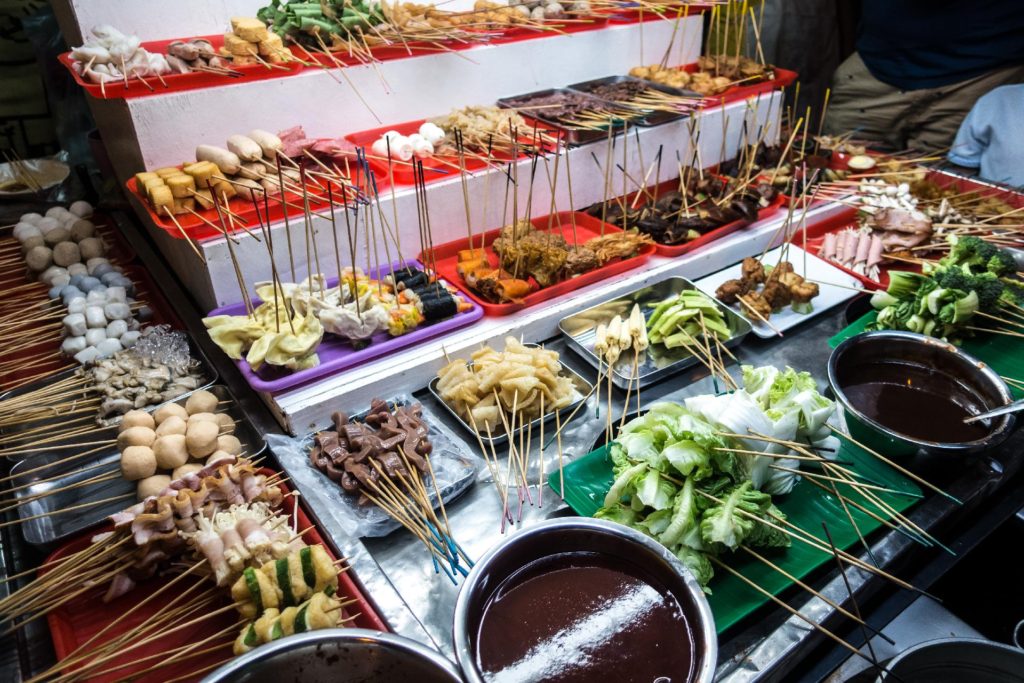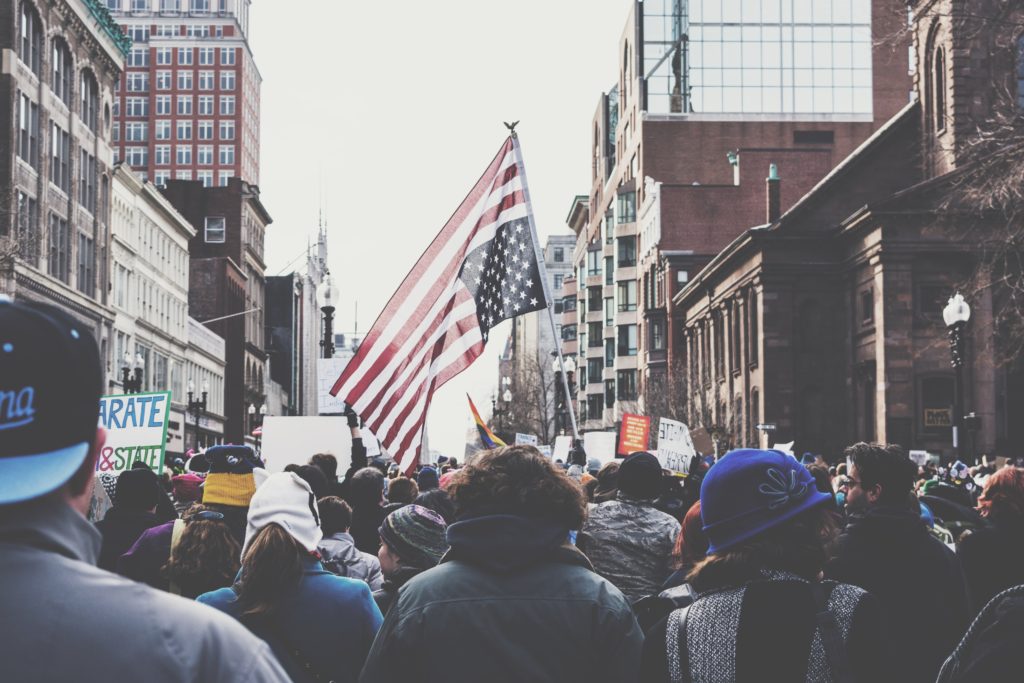There’s a turning point in some of our lives where the calling to do the “right” thing becomes so great we cannot, or will not, live with ourselves any longer to sit idle or turn the other cheek at the injustices surmounting around us. The pain and discomfort is beyond reproach. For others, social justice may be an ideology instilled upon us at birth. Social justice, is defined in the broadest sense, as access and opportunities to resources indiscriminate of race, religion, sex, or creed (to name a few).
For many, the time is NOW to take a stance, in the face of what is considered a revolution of the 21st century in light of continued police brutality, systemic oppression of People of Color, idiosyncrasies in governmental practices, and gross inequalities and injustices for anyone that does not fit what is considered “normative.” So regardless as to when your calling was, and the level of interaction with topics of diversity and justice you may have, thank you for your journey and process, as it is not always an easy one.
This short paper was driven by the current zeitgeist and is intended to be of service to help parents and professionals who are wanting to delve into the arena of diversity and social justice understanding.
My relationship with social justice comes from a lifeline and narrative close to my breast, as my father was raised as a bicultural immigrant, living in poverty for most of his life in Los Angeles, CA. Generational stories regarding discrimination and embracing people for their soul rather than their race, religion, or class structure were inherent messages made loud and clear in our home. My father taught our family the importance of universal healthcare through his actions and the beauty of all persons in the City of Angels through weekly explorations and connections. Social justice and respect for diversity was a LEARNED experience, not something that just came from rhetoric. As Dr. Bernice King recently discussed in her online protest, children not only need a mirror but also a window to learn and understand social justice.
Many times, as an advocate for social justice, you find yourself standing up for what is right in the face of adversity, demanding what is decent, despite the fact others may be in opposition to you and your position – insisting on dignified treatment of fellow members of society, despite the fact that people may not even understand your viewpoint. At the end of the day, social justice is the MORAL thing to do, and frankly is not usually the effortless road, but is always the high road to take. It is a choice one must make, knowing that colleagues, family members, and friends inherently may not agree or appreciate your standpoint.
Oftentimes people think about social justice primarily along the lines of racial equality. Social justice, however, encompasses advocacy for any person or group of people in a marginalized role. For example, children with learning differences; people with chronic illness or disability; persons who are not part of dominant religious or sexual culture. Within these marginalized communities, stigma and systemic oppression can be so profound either implicitly or explicitly, that access to resources can be limited or even cut off completely. These resources can include education, healthcare (mental and physical), housing, pharmaceuticals, food, and legal support.
Social justice can and should be instilled at an early age (e.g., 2.5 years old) and we can do this professionally and personally. While we can “teach” social justice through books, social justice should be a lived experience, as much as possible, through modeling and experiential activities. This is how both adults and children truly embody the meaning of equal rights and access for humankind. Embedded in fighting for social justice, however, is an underlying acceptance of diversity. This entails looking at your own and your family’s inherent biases and beliefs, which requires ongoing work, dialogue, and analysis and a recursive commitment keeping this process fluid.
Therefore, if you have children in the home, starting with a discussion of similarities and differences is critical. As such, you will see that I recommend the following:
(a) Starting with psychoeducation from an intellectual perspective through bibliotherapy followed by either TV or film for integration. Younger children typically work well within this framework to integrate the information and to start the dialogue.
(b) Then after a week or two, start to gently probe to see if they have questions; possibly share some of your own personal experiences.
(c) Integrate real world experiences that are connected to either the books, films, and/or things that you have spoken about at home or that your child has asked about. If there has not been discussion, still integrate real world experiences and explain to your child explicitly why you may be doing a particular activity by making the connection for them. You do not need to inundate your child with daily or even weekly diversity experiences, such that what you are doing is contrived. It should be an authentic experience for your family. Therefore, pace yourself if this is new, and do what feels rightly timed.
Fostering and Enhancing Diversity Awareness and Appreciation
From the diversity perspective, this can begin with an introduction of all the different types of people that exist in the world and how we acknowledge differences from our own vantage point. I think as adults, who may have been raised in an era to say color, or gender differences do not exist, now is the time to try to work this out of our vernacular. Noticing differences and honoring them is important. Here are some books for younger children to start the dialogue:
Books to Consider:
Hair Love (Cherry & Harrison): Ages 3+; Book regarding a Black girl and her father about how her hair is different from others and beautiful at the same time.
Fry Bread (Maillard & Martinez-Neal): Ages 3+; Book regarding Native-Americans and family – an opportunity to discuss family tradition and cultures and how they vary.
Just Ask! (Sotomayer) Ages 4+; Book that openly addresses the beauty of differences and encourages questioning and asking about them.
All Are Welcome (Penfold & Kaufman): Ages Elementary; Book regarding all types of children being welcomed at school where songs, talents, and traditions are shared.
Movies to Consider:
Monsters University: All ages; Focus on the different shapes, sizes, and colors of the monsters; all of which are unique and lovely.
A Ballerina’s Tale: Age 9+; First Black principal dancer in the NY American Ballet Theater. Also addresses body types/shapes and race.
On The Way To School (Sur le chemin de l’ecole): Ages 10+; French documentary about personal challenges children face to get to school including poverty and physical disability.
Experiential Activities to Consider:
Exploration of different foods; try restaurants, markets, food vendors, recipes in your own home.
Journey into various neighborhoods; walk around, look at stores, talk to people.
Attend houses of worship and stay after to meet people and talk.
Engage in activities that promote discussion; see: https://extension.psu.edu/more-diversity-activities-for-youth-and-adults
Fostering and Appreciating Social Justice
What does social justice actually look like for youth, adults, and families? There are multiple steps and layers of awareness and understanding as it pertains to bridging social justice inequities. As mentioned previously, the first step is a focus on diversity as a foundational base to enhance awareness. The second area to bring one’s attention to are the real consequences of oppression. This can be done by highlighting the social and economic disadvantages that oppressed people/groups face in society. The third domain that needs to be addressed are the mechanisms that sustain oppression (i.e., attitudes and behaviors) such as racism, sexism, heterosexism from the dominant positions of power. Finally, engaging in a personal/familial active resistance to hierarchies of oppression is required by forming strategies that foster an inclusive mindset by asking the question, “who is being left out?” is paramount. According to the social justice literature, all of these domains should be addressed on three specific levels: personal/self, institutional/school, and societal/community. For the purposes of this paper, I am going to focus on a micro-level impact (family level/personal). Of note, many of the aforementioned topics are complicated to grasp philosophically; however, the actual concepts in nature can be imbued from an empathic and moral perspective very early on to children. Please find hands on ideas below to integrate into your work/household:
Books To Consider:
Children:
Separate is Never Equal: Syliva Mendez and Her Family’s Fight for Desegregation (Tonatiuh). Ages 5-9: Portrays Latino cultural experience in California.
Voice of Freedom: Fannie Lou Hamer: The Spirit of the Civil Rights Movement (Sibert). Late- elementary Ages: Poems and collages celebrating Ms. Hamer.
The Story of Ruby Bridges (Coles & Ford). Late-elementary ages: The right for equal education; story of courage and hope in Mississippi.
Adults:
The New Jim Crow: Mass Incarceration In The Age of Colorblindness (Michelle Alexander); Seminal novel on mass incarceration rooted in racism.
Evicted: Poverty and Profit in The American City (Matthew Desmond); Explores and demonstrates how it is “expensive to be poor” as this novel follows eight Milwaukee families.
We Too Sing American: South Asian, Arab, Muslim, And Sikh Immigrants Shape Our Multicutural Future (Deepa Iyer); Novel focuses on racial anxiety post 9/11 and steps to take toward healing relationships with ostracized groups.
Experiential Activities to Consider:
–As a family, choosing to not be complicit with educational injustices (e.g., curriculum in your school that is biased; representation of pictures and ideologies in the classroom that are unidimensional; demand a diverse applicant pool and hiring philosophy).
–Talking about social justice issues that are happening locally and globally rather than having a family that is naive or turning cheek to them.
–Teaching your child/children to be “upstanders” (e.g., people who fight against bullies); model this for them if you see someone being picked on/discriminated against in a store, at the museum, or in the community. Stand up for what is right, front and center, so they see you believe what you preach.
— Family predicated on respect for individuals’ ideas, perspectives, needs and strengths. Questioning for example, “how might this be different for someone other than me/my family?” “How do you think this story may in fact be different than my own?”
— Peaceful protesting either in person or online for those families that have children or adults with chronic health conditions or physical disabilities.
— Raising money in your home and donating to a cause of your choice that you believe in and discussing the impact that this will have.
Final Thoughts
Committing to activism and social justice is a lifelong journey and process, requiring personal fortitude and a willingness to look at yourself, be open to a plethora of ideologies different than your own, and to sit frequently with discomfort. However, the outcomes are meaningful and the impact is grand.
“You may never know what results come of your actions, but if you do nothing, there will be no results.” –Gandhi
Stephanie Mihalas, PhD NCSP ABPP, is a licensed and board certified psychologist, as well as a nationally certified school psychologist. She is the founder of The Center for Well Being in Los Angeles, CA. Dr. Mihalas provides psychotherapeutic services to children, teens, adults, and families; as well as parent, executive, organizational, and chronic wellness coaching. Her specialty areas include: bullying, trauma, anxiety, chronic illness/rare disease, intergenerational issues, and working with marginalized populations.
She can be found at: www.askdrstephanie.com
Twitter: @askdrstephanie
Instagram: @thecenterforwellbeingla







